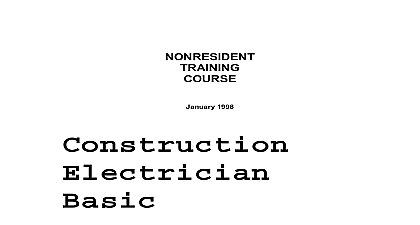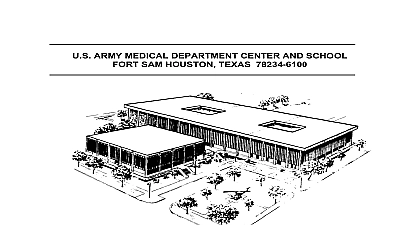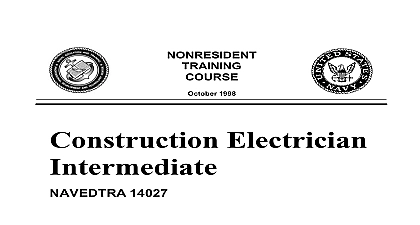INTRODUCTION TO ELECTRICITY

File Preview
Click below to download for free
Click below to download for free
File Data
| Name | introduction-to-electricity-2715034689.pdf |
|---|---|
| Type | |
| Size | 1.50 MB |
| Downloads |
Text Preview
SUBCOURSE TO ELECTRICITY DATE 31 DECEMBER 1988 308 INTRODUCTION TO ELECTRICITY Franklin experiment with a kite opened up a whole new way of life to generations As a result of this experiment we have a world that has become upon electricity Almost all major industries lean heavily upon to run their factories radio telephone and telegraph communications with electricity medicine depends upon electricity for X ray and diathermy various pumps cooling and heating devices homeowners use electricity both heat and cool their homes preserve food run dishwashers and irons and entertainment devices our homes and highways use electricity for lighting planes trains buses and cars all require electricity to operate course all these things that are so much a part of our lives must be and repaired subcourse is designed to teach you electrical fundamentals which is the for repairing any electronic equipment subcourse consists of one lesson the lesson exercises and the subcourse Hours 6 NOTE for this subcourse has changed Signal SS to Missile Munitions MM AND REPRINTED WITH MINOR REVISIONS AUGUST 1976 TO ELECTRICITY Explanation of electron theory current and magnetic fields Ohm law power magnetism generation ac effects of resistance capacitance modulation of RF use of in communications HOURS 4 ASSIGNMENT Attached Memorandum para 1 thru 20 REQUIRED None None you have completed this lesson you should OBJECTIVES Know that current flow through a conductor always produces a magnetic field Understand how Ohm law expresses the relationship of voltage current and Know that the reactance of inductors and capacitors changes as frequency but resistance remains stable Know that impedance is the total opposition to current flow in an ac circuit Know the effects of series and parallel tuned circuits when not resonant and resonance MEMORANDUM publication is provided for resident and nonresident instruction by the US Army Signal Center and School It reflects the current thought this school and conforms to published Department of the Army doctrine as closely possible THEORY General Electricity is so much a part of our everyday life that we consider why or how it performs such a variety of tasks for us at the touch of a switch What is the nature of this unseen phenomenon This cannot be answered because the exact nature of electricity is not known the uses effects and laws governing electrical action are well and so these known characteristics will be described here The Nature of Matter To study electricity you must understand something the constitution of matter The smallest particle of matter that still the identity of the material being studied is the molecule Every molecule made up of atoms which are the smallest amount of an element capable of into a chemical combination The atom can be further subdivided into classified as protons electrons and neutrons Protons are positively particles which together with neutrons are found in the nucleus of the The neutrons have no electrical charge The negatively charged electrons in orbits around the nucleus It is the study of the action of these charged particles that concerns you in the study of electricity and Figure 1 shows the diagram of the helium atom and its parts Since all are made up of a different number of electrons protons and we may assume that the difference between the various is in the number of electrons protons and neutrons each has and in how these parts are arranged 1 The helium atom In some elements the electrons rotate about the nucleus in different of orbits It is found that electrons in the outer orbit of elements are easier to move from one atom to the next than in elements It is the movement of these electrons that we call current or simply current Current Electrons rotate about a nucleus continually in all matter but doing so they neither work nor produce any of the effects of electricity To an electrical effect either some of these electrons must be removed from atom or the electrons in a conducting medium must be caused to move from one to another in a particular direction The rate at which electrons move is current which is measured in amperes Electron movement always takes place from a point of excess electrons charge toward a point having a deficiency of electrons charge Since electrons are essentially negative charges flow is taken to mean electron movement from a negative charge a positive charge This direction of current flow will be used this subcourse Since current flow is based on the movements of electrons current will more easily through materials which have a large number of free In a material such as copper there are many free electrons an external force is used to make the electrons move great numbers electrons will be put into motion Thus it is said that current through copper easily the conductivity of copper is high or copper is an electrical conductor In a material such as glass there are very few free electrons If an force is used to make the electrons move very few electrons be put into motion and consequently there will be very little flow It is said that substances such as glass are that the conductivity of glass is low or that such as glass are good insulators There are no perfect conductors and no perfect insulators In general are good conductors while rubber mica and glass are good The flow of current is evidenced by one of the following effects Heat Current when flowing through a substance produces heat example the heating element of an electric toaster becomes red when electric current passes through it Magnetic Current flowing through a coil of wire produces a effect very similar to the effects of an ordinary magnet Chemical Current flowing through a liquid produces a chemical An example of this effect is the charging of a storage Voltage Current being electron flow cannot exist until a force exerts necessary pressure to move the electrons along the conductor In batteries generators and other sources of power an excess of appears at one terminal while the other terminal has a of electrons The terminal that is deficient in electrons an attraction for free electrons and the terminal with an of electrons tends to repel electrons away from it This establishes an electrical force to move the electrons a conductor The unit of measurement is the volt The terms used to denote this force or electrical pressure are force EMF voltage and potential difference Resistance In all conductors there is some opposition to the movement of This property which depends on temperature and dimensions of the is known as resistance Resistance becomes a very important property of circuits Its unit of measure is the ohm LAW Definition Ohm law simply expressed is as follows For any dc or part of a circuit under consideration the current is equal to the EMF by the resistance The following equation expresses the relationship is common practice to use the following symbols is voltage is current is resistance these symbols Ohm law may be written simple memory aid for this relationship is shown in figure 2 Simply cover the of the desired quantity I E or R and the relationship of the remaining quantities will be shown by the circle 2 Memory aid for lea


